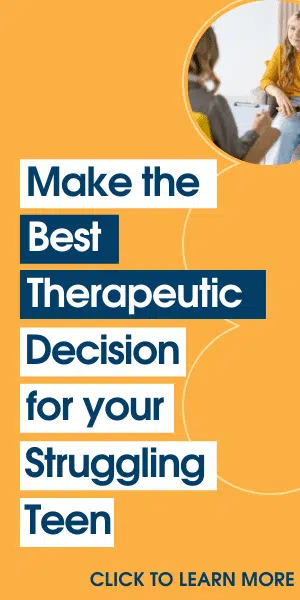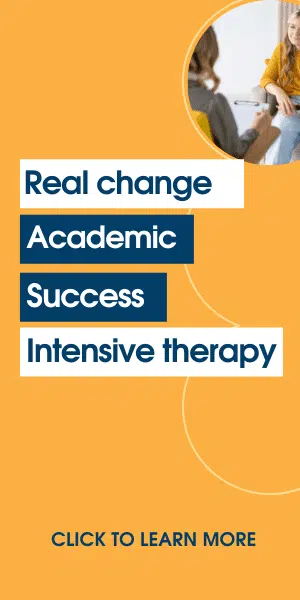Parenting Strategies: Attachment Parenting for Emotionally Distant Teenagers
Is your teen struggling with emotional or behavioral issues? Have they experienced trauma or neglect? Attachment parenting could be a powerful tool for healing and rebuilding your connection.
Attachment parenting is an approach emphasizing the emotional bond between parents and children. This bond can significantly influence a child’s development and future relationships. For at-risk youth, fostering this bond is key to providing stability, trust, and emotional security.
By the end of this post, you will have a better understanding of the principles of attachment parenting and practical strategies to help heal trauma and build trust with your at-risk child.
What is Attachment Parenting?
Attachment parenting, a term popularized by pediatrician Dr. William Sears, revolves around the concept of creating a deep emotional connection between parents and children. This bond, known as secure attachment, is essential for developing trust and healthy relationships later in life. It is a specifically helpful method for at-risk youth who may have experienced instability or trauma, as it can offer a foundation for emotional and psychological healing.
A Deeper Look at Attachment Parenting
Pediatrician William Sears is said to have first coined the expression of attachment parenting. Sears is an American born in 1940 and still practices in California; his own life was not what might be called conventional. His father deserted his family, and the major male role model in the life of a young William Sears was that of his grandfather. Sears and his wife, who is also a medical doctor, have 8 children, with several being doctors.
The attachment parenting theory states that it requires a deep emotional link between parents and child, which is sometimes known as a secure attachment. Furthermore, the theory states that a strong attachment in childhood will foster good relationships in later life, whereas a poor attachment in childhood does not augur well for future relationships.
The Principles of Attachment Parenting
In promoting his theory of attachment parenting, Dr. Sears urges new parents to adopt a number of principles or methods of behavior. These principles are as follows.
- Be Sensitive: Respond to your child’s needs with empathy and understanding will encourage a nurturing relationship that promotes emotional security in children.”
- Prepare Well: Educate yourself about pregnancy, birth, and parenting to create a supportive environment.
- Feed with Love and Respect: Approach feeding times as opportunities to bond and nurture.
- Provide Consistent Loving Care: Ensure your child feels secure through stable and continuous care.
- Use a Nurturing Touch: Physical affection like hugs and cuddles can foster a sense of safety and love.
- Implement Positive Discipline: Use constructive and compassionate methods to guide behavior.
- Ensure Restful Sleep: Create a safe and calming sleep environment to promote well-being.
- Strive for Balance: Maintain a healthy balance between personal and family life to avoid burnout and stress.
Now there are many aspects of childbirth and child-rearing, such as natural childbirth, at home or in a hospital, breastfeeding, co-sleeping, homeschooling, going to regular school, conventional diet, organic foods, etc. Dr. Sears takes no position on most of these things leaving it to individual parents to choose what they believe is best for their child.
Healing Trauma Through Attachment Parenting
Attachment parenting can be particularly effective for at-risk youth, who may have faced neglect, abuse, or other adverse experiences. By focusing on the following strategies, caregivers can help these children heal and thrive:
- Consistency and Stability: Provide a predictable routine to help the child feel secure and valued.
- When we started maintaining a regular bedtime routine, we noticed a significant change in our son’s behavior. He felt more secure and his anxiety reduced,” shares Maria, a mother of two.
- Empathy and Understanding: Recognize and validate the child’s feelings and experiences.
- “Listening to my daughter’s fears and validating her feelings helped her open up and trust me more,” says John, a father of a teenage girl.
- Active Listening: Engage in open and non-judgmental communication to build trust.
- “When I started really listening to my son without interrupting, he began to share more about his day and feelings,” recalls Susan, a single mom.
- Positive Reinforcement: Encourage desired behaviors with praise and rewards rather than punishment.
- “Praising my son’s efforts, no matter how small, has boosted his confidence and made him more willing to try new things,” notes Robert, a foster parent.
- Therapeutic Support: Consider professional therapy to address deeper emotional and psychological issues.
- “Therapy has been a game-changer for our family. It’s provided tools for better communication and understanding,” says Linda, mother of an adopted child.
Building Trust with Troubled Teens
For troubled teens, establishing trust is a critical step in their journey towards healing. Attachment parenting offers tools to build this trust:
- Open Communication: Foster a safe space for teens to express their thoughts and feelings without fear of judgment.
- “Creating a safe space where my teen could talk about anything without fear of punishment has strengthened our relationship,” shares Mark, a father of a teenage boy.
- Consistent Support: Show up for your teen consistently, demonstrating that they can rely on you.
- “Being there for my daughter, even when she pushed me away, showed her that she could count on me no matter what,” says Emma, a mother of three.
- Respect Boundaries: Respecting a teen’s boundaries can help them feel valued and understood.
- “Respecting my son’s privacy and space made him feel respected and valued, which improved our communication,” explains David, a single dad.
- Shared Activities: Engage in activities that your teen enjoys to strengthen your bond and create positive shared experiences.
- “Spending time on activities my daughter enjoys has brought us closer and created happy memories,” says Alice, a mother of a teen girl.
- Honesty and Transparency: Be honest with your teen, as transparency builds a foundation of trust.
- “Being honest with my son about family issues has built a trust that we both cherish,” notes Peter, a father of two boys.
Ultimately, attachment parenting offers a compassionate and effective framework for nurturing at-risk youth. By emphasizing emotional bonds, empathy, and stability, parents can create a supportive environment that promotes healing and healthy development.
For parents and caregivers facing the challenges of raising at-risk youth, adopting these principles can make a significant difference in the child’s life, aiding in healing trauma through attachment and building trust with troubled teens.
If you are a parent or caregiver and want to learn more about attachment parenting, you may want to read “The Hows and Whys of Attachment Parenting by Psychology Today, or explore our parent guides, together, we can create a brighter future for our children.
Here are additional resources you might be interested in:
Parenting Advice: Avoid these Most Common Parenting Mistakes
Modern Parenting Strategies: Finding What Works for Your Family













